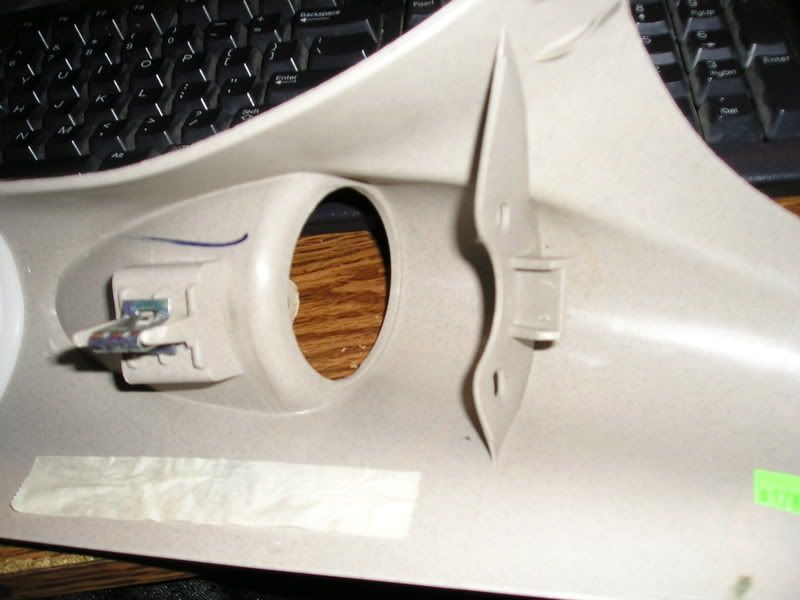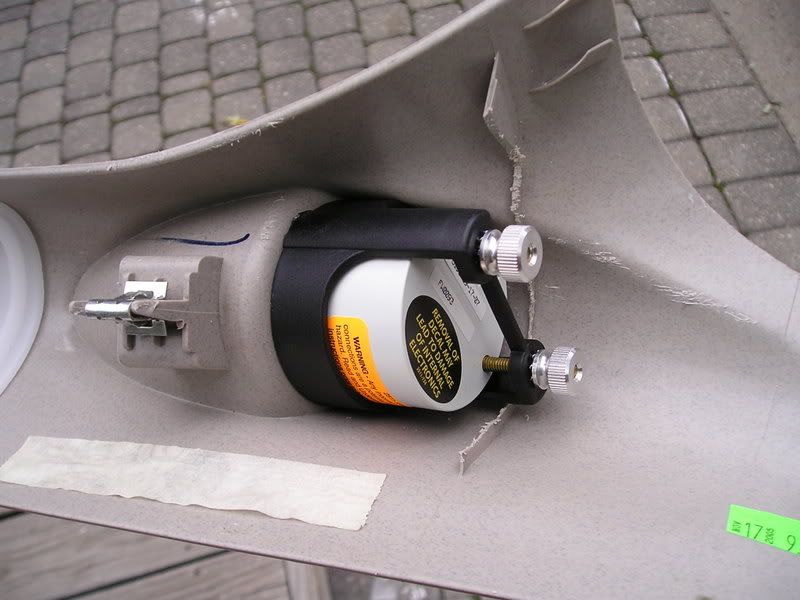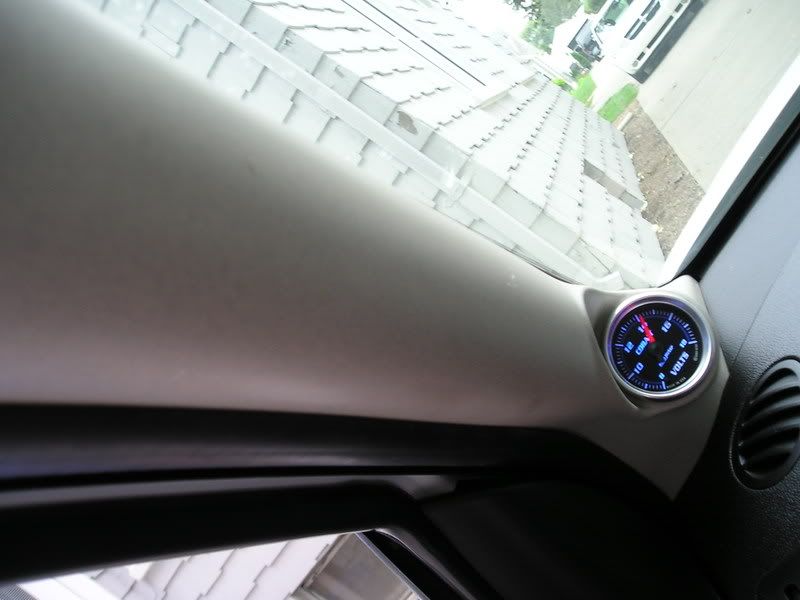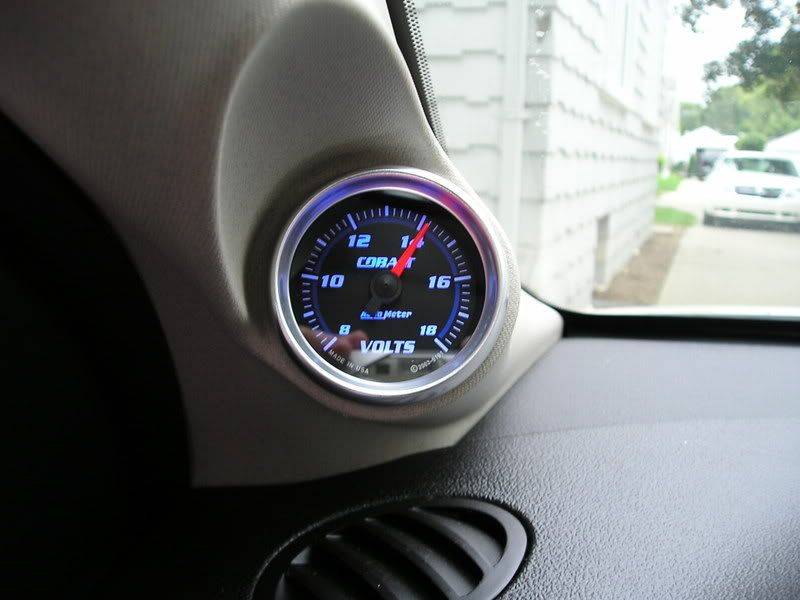cobalt123
Platinum Member
Hey guys, this how-to deals specifically with installing on a non-SS/SC Cobalt, but I'm sure you could use the wiring part for that.


Parts needed:
-Screwdriver (with Flat head and T-15 bits)
-Hacksaw and/or file
-Electrical Tape
-Wire Eyelet (for grounding)
-Auto Meter Voltmeter Gauge
-SS/SC A-Pillar (With Gauge Pod)
1. Remove your old A-pillar.

Begin by gently removing the screw cover in the top of the A-pillar

Then you can use your T-15 bit and remove the screw. Pull the A-pillar off (It has two metal clips near the bottom and the middle, as well as a plastic pin near the top)

2. Prep the new A-pillar and mount the gauge.

You'll want to remove the factory mounting brace for the boost gauge (which we're not using). You could leave it in there, as it is an Auto Meter gauge from the factory - however, your voltmeter will be rotated 90 degrees from how it should be. .
.

Place the black mounting bracket (included with the gauge) behind the gauge hole, and then slide your gauge into place (it should be a snug fit). Don't worry if the mounting bracket doesn't come right up to the back of the gauge housing of the a-pillar.
Now, using the supplied lock-washers (star-washers) and nuts, fasten the gauge to the mounting bracket. As you get the nuts tighter and tighter, you'll notice it sucks the mounting bracket to the back of the a-pillar gauge opening.



3. Wiring up the Voltmeter.
This Auto Meter gauge includes three connections, off the harness: Ground, 12V Switched and 12V Dash Lighting. Crimp and eyelet onto the end of the ground wire, and put it between the bolt and the metal brace under the steering column.

Find the dimmer harness - and then the gray wire. This is the 12V dash lighting wire connected to the dimmer switch, and will allow the gauge to follow the gauge cluster in how it lights up (if it's light out, it won't light up, if it's not it will - you can even dim the light). Connect the white wire from the harness to the gray dimmer wire. (Just cut the gray wire in half and twist the white wire to one end, and then splice the two ends back together).

Finally, find a wire that is 12V switched - that meaning, it only receives power when the ignition is turned on. I just used a switched wire I have going to my alarm. A test light proves to be very handy here. Note: You can hook it up to ignition-switched fuses in the fuse box, under the hood.
Note: You can hook it up to ignition-switched fuses in the fuse box, under the hood.

4. Finishing up.
Reassemble your dash and mount your new a-pillar (connect the harness to the gauge at this point). The two metal clips go in the slots, and the plastic pin goes into it's hole below the screw hole. Drive the screw in, and push the cover back into place.

5. Turn the car on, everything should work!

Now, if it's not dark out, just manually turn on the lights so the dash lights will come on - so should the gauge's.




Parts needed:
-Screwdriver (with Flat head and T-15 bits)
-Hacksaw and/or file
-Electrical Tape
-Wire Eyelet (for grounding)
-Auto Meter Voltmeter Gauge
-SS/SC A-Pillar (With Gauge Pod)
1. Remove your old A-pillar.

Begin by gently removing the screw cover in the top of the A-pillar

Then you can use your T-15 bit and remove the screw. Pull the A-pillar off (It has two metal clips near the bottom and the middle, as well as a plastic pin near the top)

2. Prep the new A-pillar and mount the gauge.

You'll want to remove the factory mounting brace for the boost gauge (which we're not using). You could leave it in there, as it is an Auto Meter gauge from the factory - however, your voltmeter will be rotated 90 degrees from how it should be.

Place the black mounting bracket (included with the gauge) behind the gauge hole, and then slide your gauge into place (it should be a snug fit). Don't worry if the mounting bracket doesn't come right up to the back of the gauge housing of the a-pillar.
Now, using the supplied lock-washers (star-washers) and nuts, fasten the gauge to the mounting bracket. As you get the nuts tighter and tighter, you'll notice it sucks the mounting bracket to the back of the a-pillar gauge opening.



3. Wiring up the Voltmeter.
This Auto Meter gauge includes three connections, off the harness: Ground, 12V Switched and 12V Dash Lighting. Crimp and eyelet onto the end of the ground wire, and put it between the bolt and the metal brace under the steering column.

Find the dimmer harness - and then the gray wire. This is the 12V dash lighting wire connected to the dimmer switch, and will allow the gauge to follow the gauge cluster in how it lights up (if it's light out, it won't light up, if it's not it will - you can even dim the light). Connect the white wire from the harness to the gray dimmer wire. (Just cut the gray wire in half and twist the white wire to one end, and then splice the two ends back together).

Finally, find a wire that is 12V switched - that meaning, it only receives power when the ignition is turned on. I just used a switched wire I have going to my alarm. A test light proves to be very handy here.

4. Finishing up.
Reassemble your dash and mount your new a-pillar (connect the harness to the gauge at this point). The two metal clips go in the slots, and the plastic pin goes into it's hole below the screw hole. Drive the screw in, and push the cover back into place.

5. Turn the car on, everything should work!

Now, if it's not dark out, just manually turn on the lights so the dash lights will come on - so should the gauge's.



